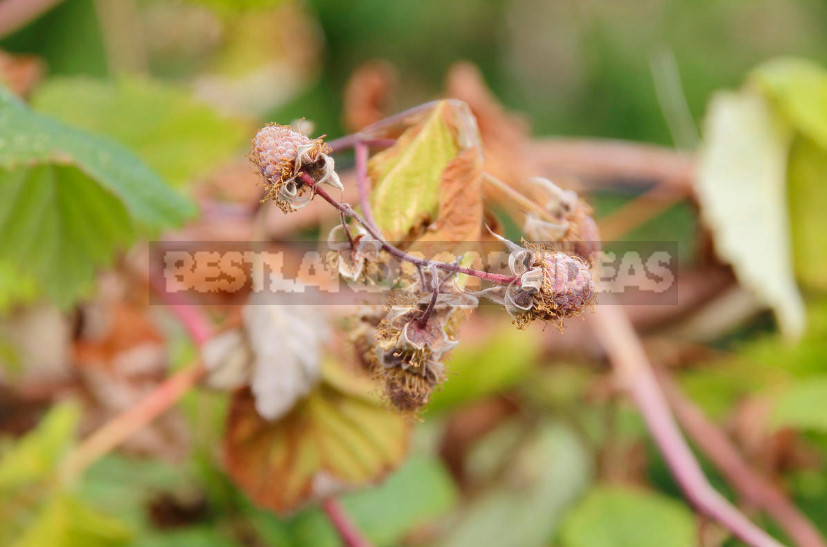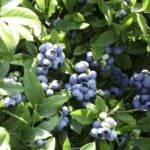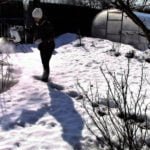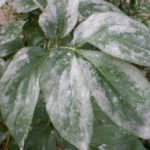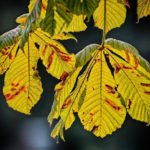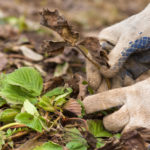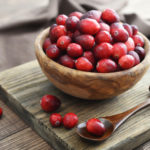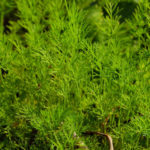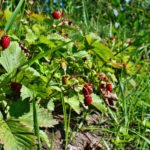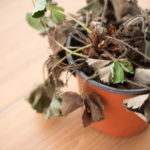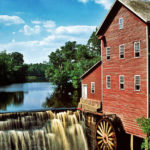You never know which side the disease will come in raspberry or strawberry beds…
Too many diseases have been brought from other countries. They slowly and silently sneak, without advertising themselves, but can appear at any cottage at any time.
The reason for the death of strawberry
About 80 strawberry diseases are known: it is not necessary to know all of them, but it is worth to be guided in signs and understand what to do with sick plants and how to organize preventive measures.
Spots on the leaves are clearly visible, so any summer resident will be able to determine the disease, if at hand there is a guide with a good description and photos. The root problem is usually attributed to improper care: little or much water, freezing, or lack of nutrients.
The faces of the blight of strawberry and raspberry
Late blight, or wilt. Plants suffer from Phytophthora fragariae var. fragariae Hickman. The disease occurs in two scenarios – chronic and transient.
Chronic for slow. In the spring the beds visible clumps that are lagging behind in the development from the main mass of plants. Young leaves are dimmer than the cheerful neighbors, there is grayness in color; old leaves wither and wither before the time, but first their edges turn red, yellow, become brown, which is similar to the lack of food. It’s actually a lack of substances and water, but hunger is caused by damage to the roots that can’t nourish the plant. Therefore, the petioles of new leaves are short. Bushes do not bear fruit or give a tiny harvest of poor-quality berries. Mustache little. Sometimes this existence of the plant is stretched for two or three years, if the reference point is considered to be the time of infection.
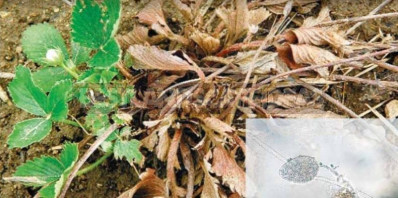
Symptoms of a transient form first appear in plants that are under stress (if they live in places where there is either a decrease in relief, or a systematic accumulation of water. This form of the disease leads to the death of peduncles, lower leaves or sudden loss of the entire plant.
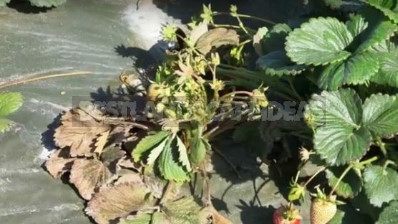
What can be seen on the roots
Weak root system. Lateral adventitious roots that feed the plant, very little. Or they die, starting at the tips: they become dark, and their upper parts remain light for some time. By the autumn they die at all.
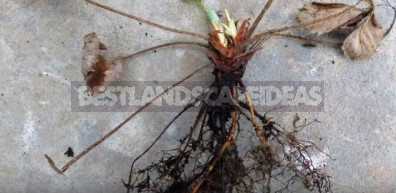
The major roots of the tips of gray or brown, glabrous (sometimes they are compared with the rat tail). The longitudinal section shows that the core (right-axial cylinder or stele) is painted red in different shades.
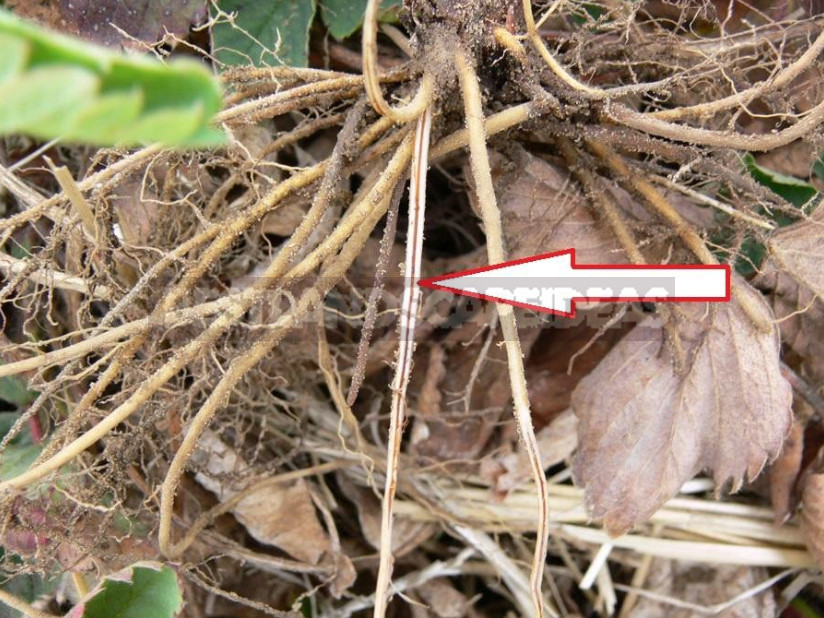
Such a change in the roots is clearly visible in the autumn, but the symptoms of the disease on the plant itself will appear in the spring or early summer.
Predisposing factor
Favorite temperature of late blight +13…+17°C, oospores germinate to actively. Infection occurs faster with an abundance of water, it helps the pathogen to move in the soil (because the spread is faster on the plantation, if it is located on a slope or in the lowland).
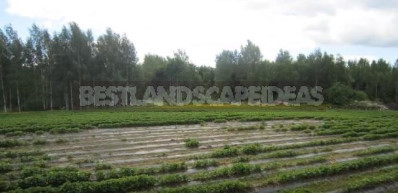
These are spring and autumn conditions. If the spring is hot and dry (in this weather, the fungus weakens its activity), and the summer begins with coolness and rain, the beginning of the disease will be in the fertile period for late blight – summer. And of course, the presence of the pathogen in the soil. According to various data, oospores can be stored in the soil for up to eight years, Finnish experts say about twenty years.
Second face
Late blight leathery rot of berries. Plants suffer from Phytophthora cactorum. This fungus rarely penetrates the roots. All aerial organs are affected, but berries are stronger than others. They appear hard leathery spots of brown or purple shades. Remove the seal from the pulp does not work. The berries are bitter, and later they wither.
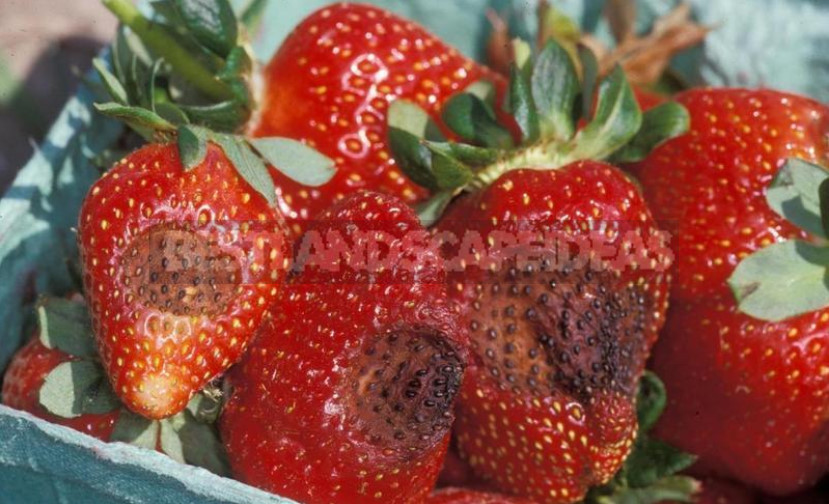
Irregularly shaped brown spots appear on buds, flowers. Die rosette of leaves and petioles base. On all organs, and berries especially at high humidity appears white thick plaque. In the winter the fungus survives in soil and on plant debris in the outlets.
What to do:
- grow healthy seedlings;
- observe crop rotation;
- to grow in annual crop;
- treat.
That such fair should be the roots of the strawberries.
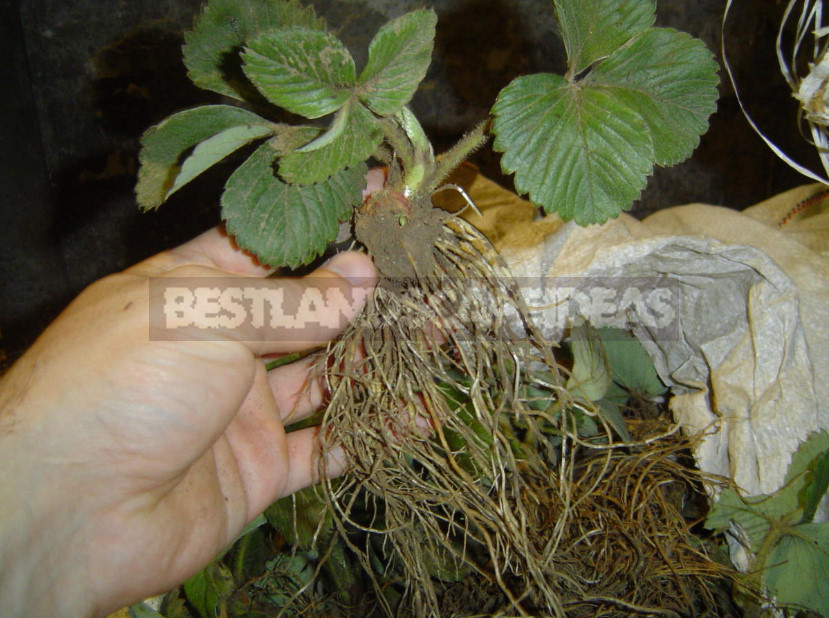
The third face
Late blight basal rot (rot root collar and roots). Plants suffer from Phytophthora cactorum. Her menu plants 83 genera in which it develops on the roots, stems, bark, fruits, kidneys.
The strawberries give a lot of symptoms, it affects the whole plant.
How it manifests
The lower leaves wither: they lie down on the ground, touching it with the upper side of the leaf blade. On the root neck, at the base of peduncles and petioles, there are spots in the form of rings, then these places rot. The roots die off gradually, which does not lead to death, but new leaves grow deformed, they have thin stalks; at high humidity, brown oily spots appear, in dry weather they dry up. The socket deformed, unusual shapes and sizes.
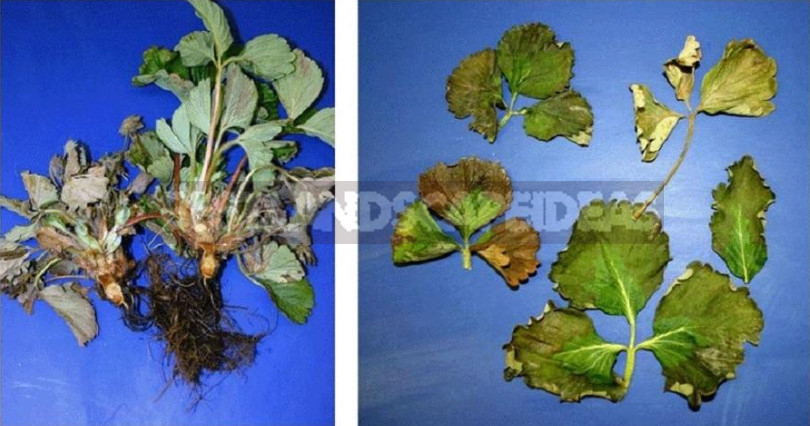
In appearance, the plants resemble nematodes.
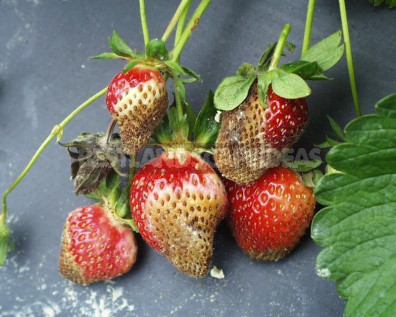
The flowers may darken the middle (pistils die). On berries Late blight root rot manifests itself as follows:
- ovaries are covered with brown spots, stop growing and dry up;
- on the unripe berries of the spots expand to the entire surface, the flesh becomes dense;
- spice stains give a bitter unpleasant taste;
- when the longitudinal section of the berries can be seen from the stalk is darkening tissue.
The disease will manifest itself sooner if was infected planting material, if the soil is a little bit later.
What to do
- use healthy outlets for planting (buy from reliable sellers);
- choose sustainable varieties;
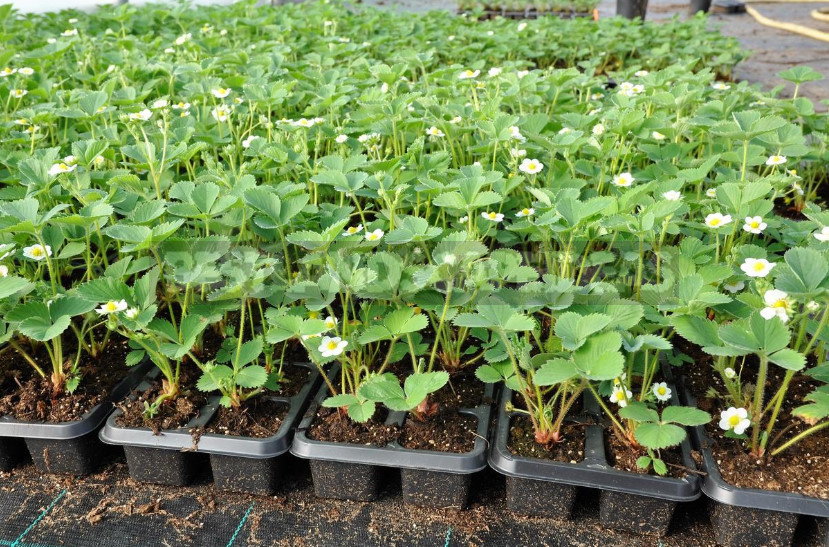
- for a long time, soak the planting material in solutions of drugs to prevent disease;
- remember, that planted spring young plants can wither all summer and autumn from disease.
How to protect plants from diseases
- On heavy soils, the disease develops stronger, because planted on fertile, fairly light soils. Mulch the bushes every year.
- If plants with signs of illness are found on a bed, to remove all copies, to burn them, to sanitize the soil on a bed. Return the culture as soon as possible (according to different sources 4-8-20 years).
- To grow strawberry in the former the ridges of green manure for soil improvement, that does not negate the conduct of the activities of rehabilitation of the soil after harvesting diseased plants.
- In damp places not to plant at all or to grow on crests.
- Choose sustainable varieties, buy seedlings in nurseries.
- Examine the bushes twice a year (spring and autumn), be sure to inspect the condition of the roots.
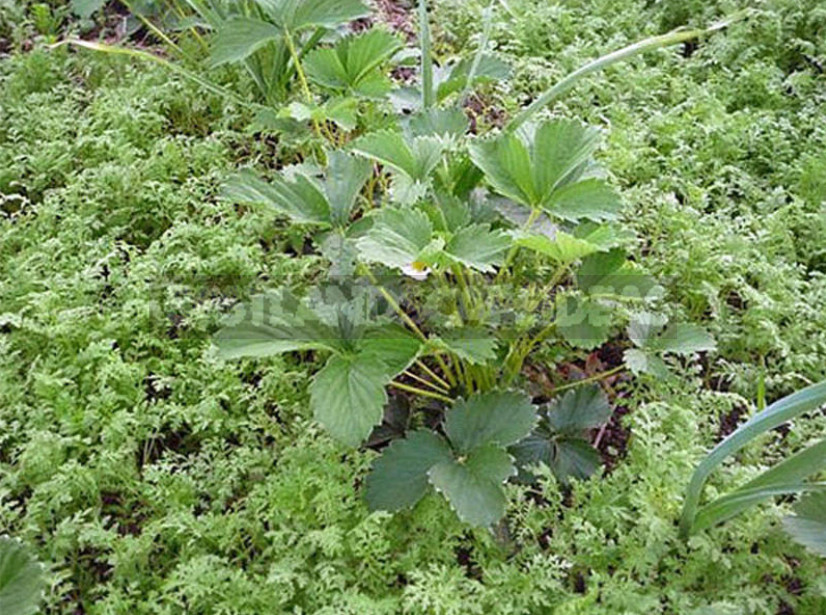
Late blight of raspberry
Pathogen-Phytophthora frafariae var. rubi, and not only it: as experts suggest, a complex of different types of late blight and Fusarium.
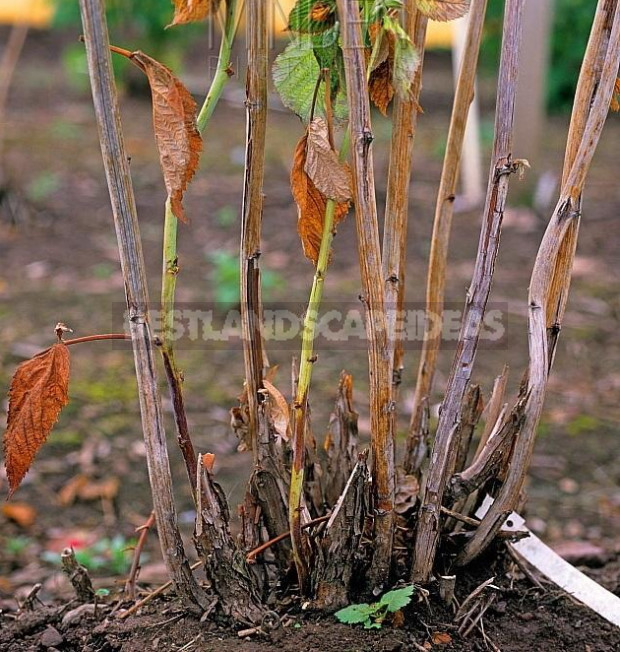
The first cases were registered in the 50s of the last century, in the 90’s the disease appeared on the plots of selection institutes.
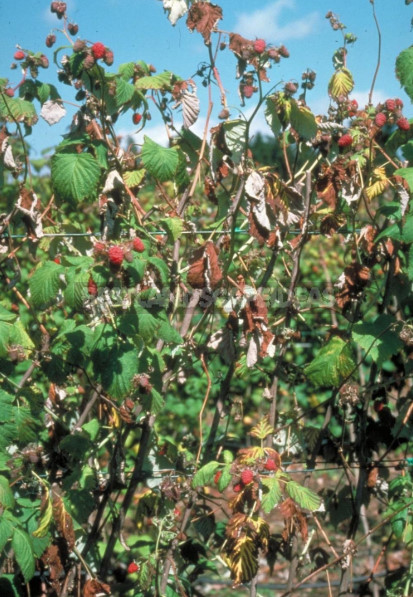
Raspberry leaves dry up and twist.
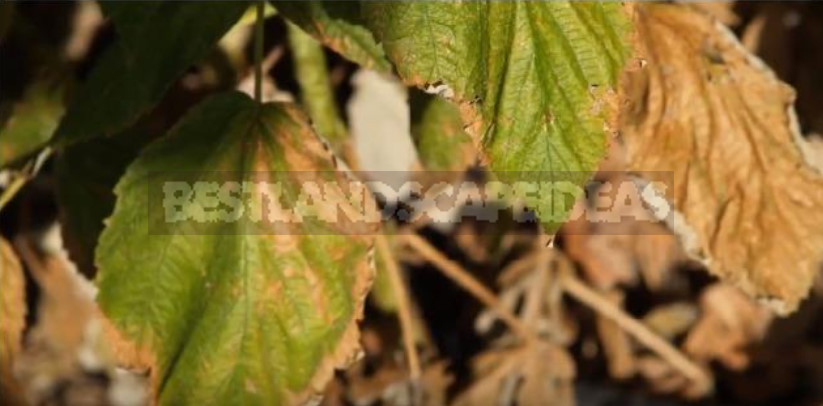
Temperature preferences of Phytophthora
At high humidity the soil should warm up to +5…+25°C, and the most favorable for Phytophthora temperature range +10…+17°C in the rain. But this is the end of summer-the beginning of autumn or spring.
If you look from afar, you can see the bald spots in the raspberry, that is, clear foci with damaged plants. If you’re close … you’ll find that the roots are red.
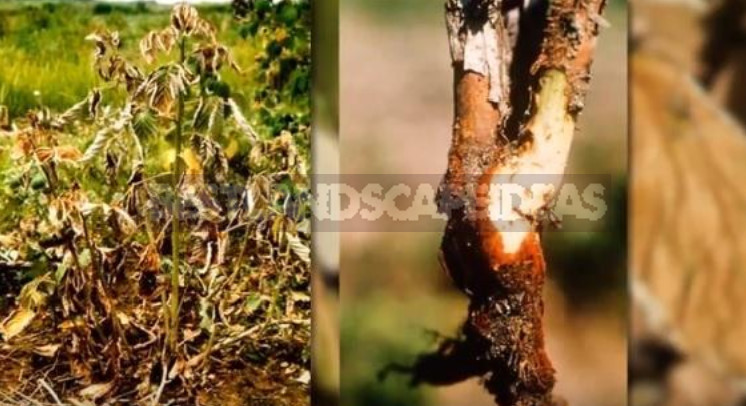
How does
- kidneys do not bloom in the spring;
- shoots first wither, and then dry up in a specific form: it is believed that it is very similar to a shepherd’s stick with a large hook;
- the lower part of the shoots darkens to a height of 30 cm, there are spots that grow into a ring around the shoot;
- if it is damp, damp, on the darkened sites the RAID of a mushroom is visible.
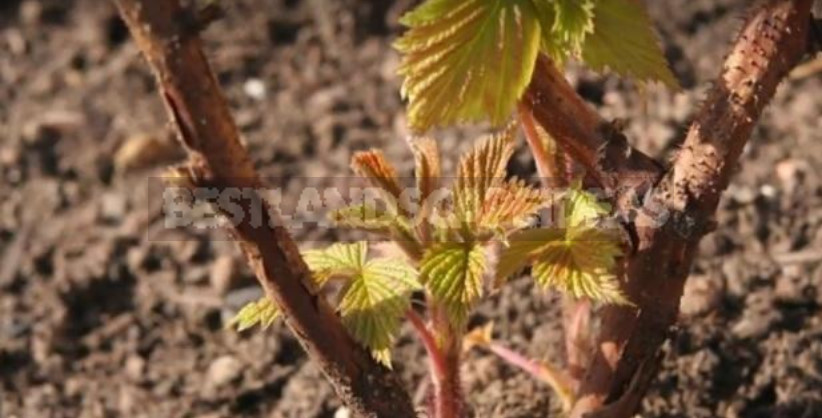
If you find late blight on strawberries or raspberries
- these diseases are quarantine;
- remember that soil treatment with fungicides is ineffective;
- take out and burn diseased plants;
- be careful when choosing a seller and buying seedlings.
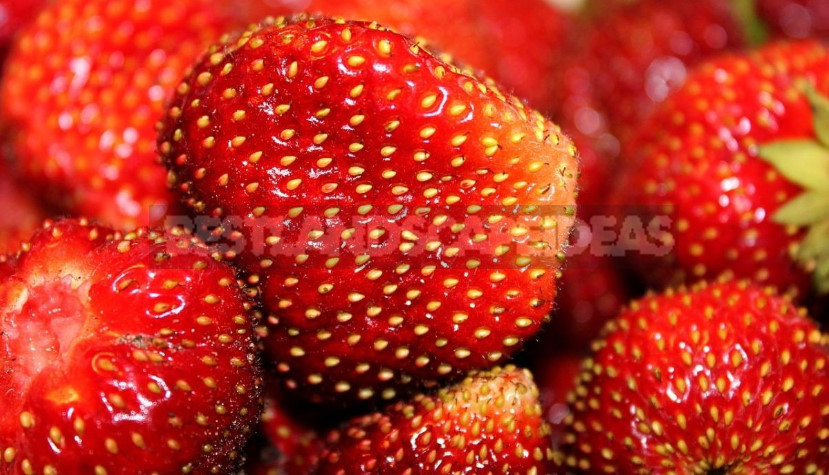
Let’s try to keep our strawberries and raspberries were always healthy!
